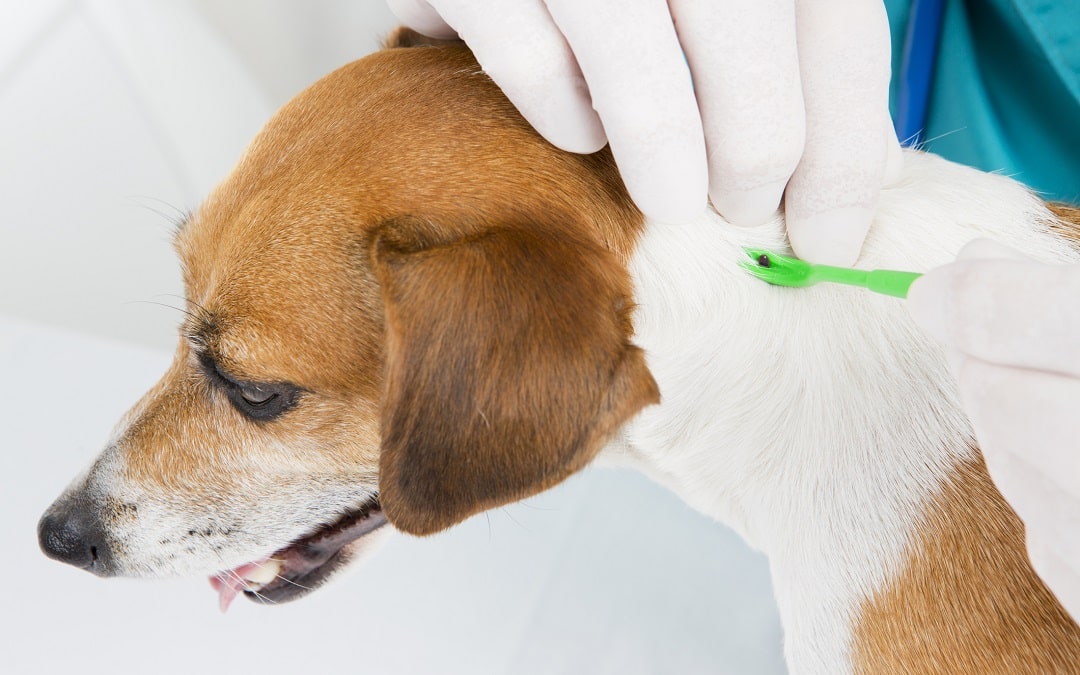Skin infections can be distressing and uncomfortable for both your dog and you. Quick action can be crucial to prevent the skin infection from developing, or spreading. Dogs can repeatedly scratch a sore area, causing further damage, which can take a long time to heal. Certain breeds are more prone to skin infections than others, so be particularly vigilant if you have a breed of dog that has a predisposition toward skin infections. Breed characteristics such as heavy skin folds, or long droopy ears can be more prone to skin infections. Good care of your dog will include regular checks of his skin health.
How Do I Know if My Pet Has a Skin Infection?
The indicators for skin infections are fairly clear. As always, it is important to look for changes from your dog’s normal, as all dogs are different. Key points to look for are:
- flaking or scaly skin
- redness and itchiness
- seeping blood or pus
- spots or pustules
- swelling or heat
- bad smell
- hair loss, or hair standing on end
- thickening of the skin
- brown nails
If you are in any doubt as to the skin health of your dog, it is always best to seek veterinary advice.
What Do Skin Infections Look Like in Pets?
As a responsible dog owner, you will know your dog. You will spot changes in behaviour, which can give you an early indication of an issue. Excessive licking or scratching is always a key thing to watch out for. If your dog seems lethargic or loses his appetite, then this could be an indication of an infection. If your dog begins exhibiting any behaviour that is out of the ordinary, always consider skin infections as a possible cause and carry out a thorough examination of your dog.
Types of Skin Infections in Dogs
When we treat skin infections in dogs, we need to provide the appropriate treatment for the type of skin infection. The treatment will vary according to the root cause, and this is why it is crucial that you visit your vet if you suspect that your dog has a skin infection so that he can receive the correct, tailor-made care for his condition.
Bacterial skin infection in dogs
Bacterial skin infections, known as pyoderma, occur when the bacteria that normally live harmlessly on the skin, get under the skin and cause an infection. This may present as red, circular patches on the skin, that may smell. Your vet will examine the area, and take a swab to check the type of infection. Bacterial skin infections are normally treated with antibiotics, sometimes in combination with an antibacterial shampoo.
Dog fungal skin infections
Fungal skin infections, such as ringworm, often present as flaky or crusty skin that is extremely itchy. They are commonly found around skin folds, armpits, or near the anal area. Again, your vet will diagnose your pet using a combination of examination and a swab to determine the type of skin infection. Fungal skin infections can be treated using a combination of antibiotics and antifungal shampoos.
Parasitic skin infection in dogs
Scabies is a common example of parasitic skin infection, where the symptoms are caused by mites. This will usually present as hives, oozing lesions, or hair loss. Your vet will examine your dog, and take a skin sample for confirmation of the diagnosis. Treatment will depend on the type of parasite. Fleas and ticks are usually treated using a spot-on style treatment, whilst ear mites may be treated with a topical medication.
Viral skin infections
The most common viral skin infections are papilloma-type and can regress spontaneously. However, some viral skin infections will need to be treated with antivirals. Your vet will take a skin swab to determine the type of infection and advise on the best treatment approach, based on the diagnosis.
Prevention of Infection and General Skin Care
As always, prevention is better than cure, and keeping your dogs fit and healthy, will help to reduce the risk of skin infections developing. If you have a breed of dog that is particularly prone to skin diseases, then it is important to be extra vigilant to prevent skin infections from developing. Good health starts with good nutrition, so ensure that you feed your dogs a good diet, avoiding cheap food that is packed full of preservatives and food colourings. Check out the nutrition recommendations for your breed, as this can vary. If you are in doubt about the best way to feed your dogs, please speak to your vet.
Regular grooming will help to keep the dog’s skin and hair in good condition, as well as giving you the chance to thoroughly examine your dogs. Make sure you pay particular attention to skin folds, and areas such as the armpits and ears, where it is easy for skin infections to flourish. If your dog is wet or muddy, make sure that you dry and clean key problem areas. Damp or dirt can get trapped, which can allow infections to develop. Good care can help to prevent skin disease in dogs from occurring.
However, some dogs are prone to infections and some infections are extremely virulent, so sometimes your dog will contract an infection, even with the best care in the world.
When to Seek Veterinary Care for Your Pet?
If you are uncertain whether your dog needs to see a vet, always get in touch. Our experienced and helpful team of vets will be able to advise you on the best course to take. We are here to help, and we would rather see your pet if you are unsure than for you to wait while the infection develops, and then it may be harder to treat. The earlier we can catch a problem, the better. If you suspect that your pet is developing a skin infection, please book an appointment to bring them in and get them checked out by our vet team.
Whether your dog has a suspected skin conditions,, or you are managing a long-term underlying skin disease, we are here to assist with all your veterinary dermatology needs. To book your dog an appointment, simply contact our team at Anrich Vets today on 01942 242001

